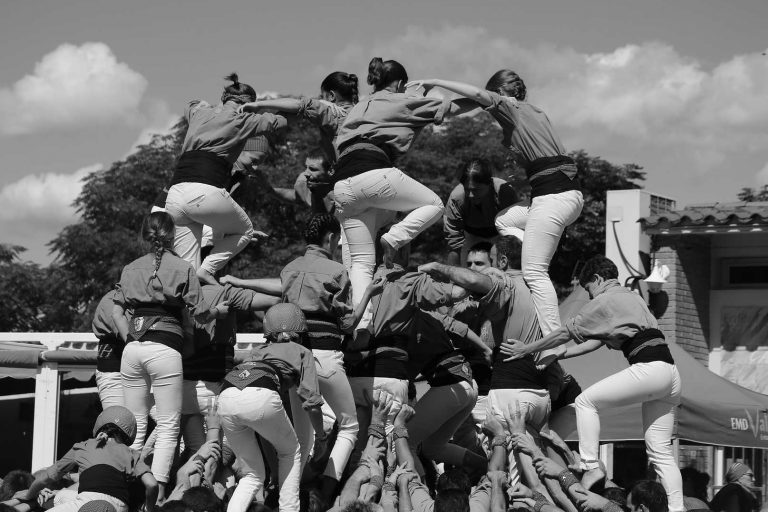A local guide’s perspective: Barcelona
Each year, Barcelona receives thousands of student groups from all over the world. Students ramble in Las Ramblas, glare at Gaudí’s architecture, and bathe on the beach in the Barceloneta.
With so much to see and do, it’s easy to get lost in the wonder of Catalonia’s capital and miss out on the authenticity of the local culture.
Luckily, local guide Maribel shares with Spanish teachers two Catalonian traditions that promise a genuine experience in Barcelona for high school students.
Sardanas — the dance that gives flamenco a run for its money
On a Saturday in the middle of the Gothic Quarter of Barcelona, you will encounter the lovely sound of rustic pipes and muffled drums. As you move closer to the music, you will find several hundred people holding their hands up in a circle and kicking their feet to the tune of the music around them.
This traditional Catalonian dance, sardanas, is always on Maribel’s list when guiding a group of students around the city.
“Every Saturday afternoon my aunt and uncle dance sardanas,” Maribel says. “So I thought ‘Why not take students?’”
Although the origin of this dance is still a mystery, the dance has been around for centuries and has become a symbol of Catalonia.
For students and teachers visiting, Maribel describes the experience as a fun way that students can connect with the locals in Catalonia.
Where you can see Sardanas
Visit the Catalan Cultural Association website to see where and when sardanas are scheduled in Barcelona.
Castells — human towers in Barcelona’s city streets
“Strength, courage, balance, and teamwork” is the motto of these brave groups who coordinate the thrilling spectacle of the human tower, or castells in Catalán. One by one, participants (known as castellers) rise tier by tier until the final participant, a small child, climbs to the summit and raises his or her hand in victory before signaling the descent.
“Castells started in the south of Catalonia in the 18th century and spread all over in the 20th century,” Maribel explains. “Today, they are doing castells with more than 100 people!”
If Maribel’s groups are unable to see a performance on the weekend, she takes them to a rehearsal, where they can connect with participants during the week.
“The castells bring together people of all ages to achieve a common goal,” she says, “you see kids as young as six or seven years old, teenagers, and adults, all working together, which is a beautiful thing.”
Where you can see Castells
- Castellers de la Vila de Gràcia – Practice on Mon-8pm-10pm; Weds-8pm-10:30pm; Fri-8pm-10:30pm at Espai Cultural Albert Musons, Carrer de l’Alzina, 7, 9, 08024 Barcelona
- Castellers de Sants – Practice on Mon-7pm-10pm; Fri-7:30pm-11:30pm at Escola Jaume I., Carrer dels Comtes de Bell-lloc, 86, 08014 Barcelona
See the best of Barcelona & Costa Brava

Leave a comment